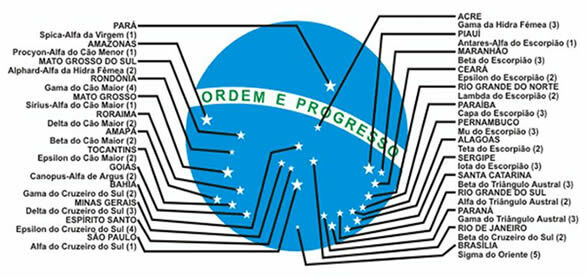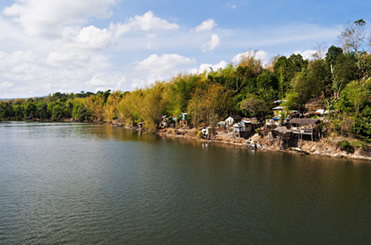The Brazilian geographic space encompasses six types of vegetation cover: Amazon Forest, Atlantic Forest, Cerrado, Caatinga, Pantanal and Pampa. Although these vegetations have suffered from the deforestation process since the colonization period, they still cover a considerable part of the national territory. The main characteristics of each of them are as follows:
Amazon rainforest
Also called Equatorial Latifoliate Forest, is the largest and most extensive form of vegetation in Brazil, also occupying several other countries in South America. Its approximate area currently corresponds to more than six million km², four million of which are in Brazil. It occupies almost half of the Brazilian territory, although 20% of its area has already been devastated.
It is characterized by being a heterogeneous forest, that is, with an accentuated variety of plant species. It is perennial (trees do not lose their leaves at a certain time of the year), hygrophytic (easy to adapt to humidity) and broadleaved (leaves are usually large and broad).
Atlantic forest
Also called Tropical Latifoliate Forest, occupies about 13% of the national territory, being smaller only than the Amazon Forest and the Cerrado. It is the most devastated type of vegetation cover, currently showing only 14% of its original area. It is located along the entire Brazilian coast, extending from the Northeast region of the country. In some of its stretches, there are the highest levels of biodiversity on the planet, that is, it has a large number of animal and plant species per m².
thick
It is a forest formation of the type savanna, being considered by many authors as the most complex type of savanna in the world. It is the second largest forest domain in Brazil, occupying more than 24% of the country's area. Like the Atlantic Forest, the Cerrado was also quite devastated, with almost 80% of its biomass destroyed by human action.
Due to the fact that low humidity is predominant during most of the year, as well as for having a soil poor in nutrients, the Cerrado has sparse trees, not very tall and with a twisted trunk to avoid the loss of Water. There are also the so-called Cerrados, where the forest formation is denser.
Due to its very acidic soil, its territory did not favor agriculture until the 1970s, when it was discovered that, by adding limestone to the soil, this acidity was corrected. This discovery contributed to an advance in agriculture in the country, but it was also responsible for the intensification of the devastation process of this forest composition.
Do not stop now... There's more after the advertising ;)
Caatinga
Located almost entirely in the Northeast region of Brazil, the Caatinga is the only biome 100% located in the national territory, occupying about 10% of the area of Brazil. Despite being apparently poor in diversity, it is the forest with a semi-arid climate, richest in fauna and flora in the world, which justifies the need for its preservation.
Its vegetation is characterized by being xerophilic (which adapts easily to aridity). Its composition changes as weather conditions vary. During dry periods, it loses its leaves and becomes practically dry. However, during the rainy season, it quickly transforms, becoming green vegetation covered with leaves.
wetland
The Pantanal complex occupies part of the country's Midwest region, extending to other countries, such as Paraguay and Argentina. It occupies about 2% of the Brazilian territory, being characterized mainly for being the most heterogeneous forest formation in the country and for being considered the largest floodplain in the world.
The conditions of animal life in this environment are determined by the dynamics of water flows. During the rainy season (most of the year), river beds tend to overflow, due to the low slope of the terrain; during this period, terrestrial species migrate seeking refuge and aquatic animals reproduce. During the dry season, the water level decreases again and leaves the soil rich in nutrients, favoring the return of animal species and facilitating the reproduction of birds.
As it is a transition zone between the Amazon Forest, the Atlantic Forest and the Cerrado, it has a high biodiversity, reaching one of the highest concentration rates of animals in the entire country. world.
pampa
Also called Southern Fields and Gaucho Campaign, is a field vegetation, formed by herbaceous plants (predominantly creeping). It occupies about 2% of the national territory in the southern region of the country and extends to Uruguay.
By Rodolfo Alves Pena
Graduated in Geography



